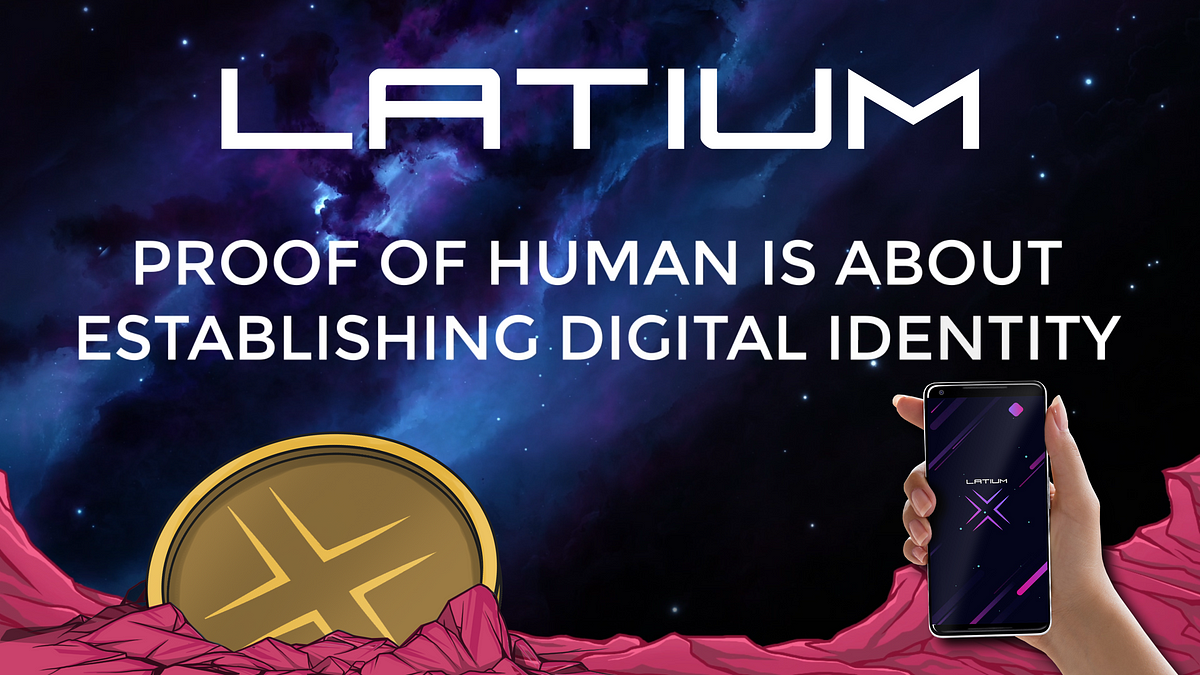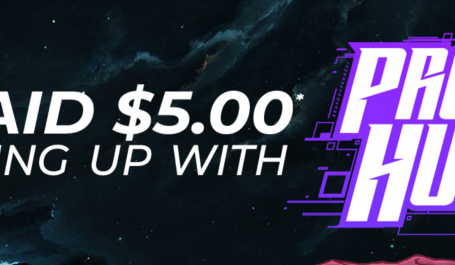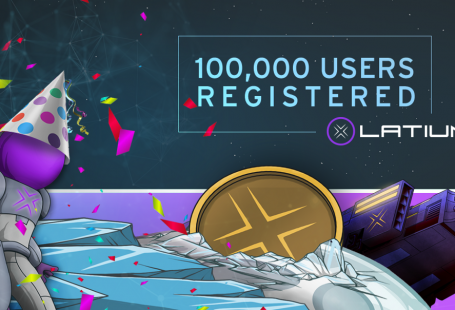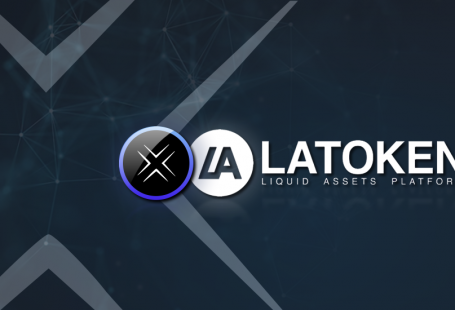
While our foundation has been as a gig-economy tasking platform, Latium continues to evolve as much, much more. While feature development and platform expansion has continued at a rapid pace, we’ve been working behind the scenes on exciting, new concepts to further shape and influence the future of Latium for our community of users.
As we forge ahead with the core intent of progressing the general adoption of crypto to an international audience, we continue to refine that process by allowing unprecedented flexibility, freedom and innovation for our userbase.
We present below our most recent update that lays out the future plans and developments of many core aspects of the Latium ecosystem.
https://www.youtube.com/watch?v=WTuZIyGyhxw
Proof of Human is about establishing digital identity, digital trust and scarce consensus rights. The basis of this identity is a composition of biometric data and employment facilitation to generate a visual and nominal identity. Aggregate results represent the value of a user to the master network in a specific context.
As a whole this functionality creates the opportunity to minimize fraud, generate new enterprise ventures and reach conclusions as a network of individuals. By focusing on market pricing dynamics, each user is granted their own personalized currency. In practice, this is the act of giving every person on the planet a banking license in a newly formed decentralized economy. To meet these goals we have designed a product line that is part of a seven point plan.
1. Scarce Individual Identity
Limiting a given user to a single digital account is an issue facing most online businesses. Without this feature it is difficult to grant rights that require any degree of trust between a user and the rest of the network. The most common abuse is the ability of a spambot to ignore guidelines in an effort to trade quality of the larger network for potential personal gain. The motivations are easily understood but a solution to the problem is more involved.
To date, the best attempts have typically involved mandatory, invasive, government issued identification in situations where it otherwise wouldn’t be required. Our base foundation of digital trust is built on unique biometric data. A required key sequence ensures no other users can submit your data, and ongoing maintenance of your personal identity means a high barrier to creating a duplicate account. By requiring a resource intensive process the concept of one human generating tens of thousands of accounts disappears.
Given the popularity of this problem, our proprietary data input process is currently live and exportable to third party applications. Internally, our first application of this identity is to mint a personal cryptocurrency for each verified user. This somewhat obvious use case was not possible without scarce identity because scammers would create thousands of temporary currencies with an explicit purpose of defrauding investors.
2. Incremental Drip Currencies
Proof of human is a new implementation of financial engineering. The design is inspired by drip faucets demonstrated in development environments of common cryptocurrencies such as ethereum. Proof of work is inefficient, and the average user is unlikely to have the discipline for Proof of Stake. By utilizing a drip faucet to refill a users spendability at a standardized rate, market participants are voluntarily agreeing to recover some of their market share back from fellow participants.
This is essentially a voluntary taxation of each other rather than an asymmetric relationship of interest payments and government taxation. This solution gives a speculative property to the long term valuation of each identity currency and a market driven price discovery method for how valuable each individual is. Enfranchising every user with value determined by monetary purpose gives everyone the potential to rise to the top and immediately feel it in purchasing power.
Our micro-ledgers of identity currency are not intended to be a long term storage of wealth or an attempt to compete with traditional currencies like Bitcoin. Instead identity currencies are intended to represent the velocity of money as it moves through the labor market.
In the legacy economy, debt traverses the financial landscape as velocity, requiring a constant increase of negative value to offset the effects of interest payments. As debt is destroyed new credit must be issued at interest to maintain the current monetary supply. By refactoring the velocity of money to remove the concept of interest payments and credit destruction, we are creating a new market with stunningly defined purpose, credit but not debt. This Approach to economics with a prioritization of ethics, means it is reasonable to expect a global awakening to capitalism.
3. Visual Identity in Underwriting
The functionality described could be a lot for the average user to take on. This is a challenge we have already solved, and the answer is to simplify the design to form visual representations of multi-dimensional identity. Demonstrated competency to the master network is rewarded as a series of badges which in turn increases the calculated value of a users identity currency. True to spirit, the free market is the ultimate valuation by acting as a failover mechanism to offset localized and systemic miscalculations.
Examples of phase 1 system badges include, biometric validation, HODL rewards, risk based social networking, tasking as employer and employee as well as verified subscribers on social media outlets such as twitter, Facebook and youtube. Our badging system also supports user created badges which allow the market to acknowledge context identity in an autonomous, friction-less manor. If an employer interviews an employee they can grant a custom badge. This context can then act as an employment filter.
Anyone can hire the target user in the future without needing to interact. This functionality can be utilized to control ingress and egress of subnetworks as well as specific identifiable skillsets such as coding, marketing or accounting. Employers seeking candidates will not always be human, meaning that a user can verify another human on behalf of a machine that will ultimately act as the employer.
4. Scarce Consensus Rights
As system generated badges are accumulated, the identity currency begins to have value. This value per coin or market cap can be utilized as a system of decentralized voting rights. The value of each vote in our application is based on how useful that person is to other users in the master network.
Additionally, subnetworks can be formed, monetized, and self managed as a series of complex tasks. As a society we have had a very difficult time self organizing digitally because of a lack of identity scarcity and the trust that comes with it.
4. Enterprise Currencies
After building the infrastructure for personal currencies, things start to get really exciting as we move into complex structures. We are talking about a revolutionary avenue for the monetization of new and existing subnetworks. This means cultivating the creation of for-profit, non-profit and government sponsored entities.
By allowing users to invest in newly minted company currencies, using their personal identity currencies, everyone becomes a capitalist overnight. The ability to connect with other creative minds, develop a business plan and issue a currency to represent ownership claims will mean a new world of investment opportunity.
6. Employment as Automation
Our current market predictions involve artificial intelligence acting as an employer to human labor within the next 5 years. Facilitation of that employment will be done on our Latium network and transactions will ultimately be settled as LATX. When a unit of work originates from either a human or a machine, a network of users with identifiable skillsets will begin the mining process to compete for a monetary reward. Complex enterprise needs can typically be boiled down to a few consistent pieces: Resource allocation, prioritization and accountability of execution.
Anyone who runs a successful business will tell you that the ability to prioritize the needs of that enterprise will ultimately dictate its ability to succeed. By establishing a single, numerical representation of each user we have the ability to apply decentralized scarce voting rights to prioritize complex backlogs and lists.
This process of distributed problem solving will undoubtedly lead to major breakthroughs in the field of AI. Machines will think in the form of questions and pay humans to answer them. As our platform evolves, an entire new model of running a business emerges where the enterprise itself exists as an ongoing series of complex tasks to be managed by a network of autonomous users.
The ability to filter candidates, hire them and verify the work without human intervention is a first of its kind solution for end to end automated employment. For the first time in history, machines will be able to create and claim ownership of a business without human involvement or oversight.
7. Enterprise Blockchain
The concept of a blockchain in many ways is already a set of autonomous code making decisions about how to facilitate transactions associated with the creation of new bitcoin. This overlap highlights a glaring use case, utilize scarce consensus rights as decentralized ledger technology. The next iteration of a blockchain needs to solve enterprise scale and latency needs while also improving on energy waste that exists in blockchain 1.0
Our approach to establishing a tailored blockchain is to first build the required infrastructure to meet enterprise and scalability requirements. By establishing scarcity of consensus, we can completely redefine the process of mining by removing the current model of artificial inefficiency. The same scarce consensus rights used to prioritize enterprise needs will also have the ability to replace proof of work at the raw computing layer.
This form of scarce consensus is not currently offered by any decentralized ledger technology. The secret to reaching at scale cryptocurrency adoption is to first build centralized micro ledgers on tried and trusted enterprise technology stacks. The harvested information will then act as seed data for a bootstrapping sequence. Once completed the world will have an authentic end to end decentralized economy.
Current Status
Our token LATX is post ICO and has been live trading since April 2018. We are listed on several major exchanges and have mobile applications available for download on android.
As of today, features that are currently deployed to our production environment include:
- one to many tasking
- wallet management
- no fee peer to peer payments
- no fee exchange trading with support for multiple currencies
- HODL rewards
- spam free chat
- biometric validation
- third party, exportable, scarce identity
- bug bounties
- affiliate program
We have completed the majority of our roadmap for the first year and outstanding items are currently in development. We will be releasing a full roadmap and feature-set for Proof of human over the coming month.
Additionally we are beginning the process of overt and guerrilla marketing including global meetups, social advertising and a series of core tasks utilizing our one to many tasking platform. Users can work to facilitate our growth and earn income paid in LATX.
Begin cultivating your identity currency today and direct the internet to your cause.
Proof of human: a new blockchain, a new economy, a new future
Thank you for your interest in the the Latium platform. As always you can follow us on Twitter and join our Telegram Chat for the latest news, updates and developments as we progress.







